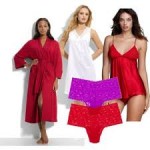Hair Styles and Hair Coloring Colors:Techniques To Enhance Both

Haircoloring, perming, blow drying and hot iron styling can leave the hair in a state of disrepair, making it lose its natural luster. Longer hair is simply over-exposed to environmental factors until it too, loses its shine and depth. This is where the concept of contrast plays a role in restoring the natural appearance of processed, long or dull looking hair. However, one can over-contrast (as in a highlighting application) and actually change the overall appearance and the way the eye perceives your image. The more contrast that is applied, the more carefully you will need to reassess the overall color of your hair as it relates to your complexion and lifestyle.
So, let’s consider a style that’s cut short, closely cropped and shortest at the nape of the neck while longer at the crown of the head. This style is enhanced considerably with the application of a highlighting procedure to the longer hair alone; the contrast that highlighting provides adds depth, movement and symmetry to the style. However, if there is too much contrast – if the highlighting is too heavy – then the sense of balance and symmetry is sacraficed; the cut looks imprecise and the overall appearance washed out – with the focus on the top of the head rather than on the face.
If the hair is cut above or somewhat below shoulder length and layered, the style is enhanced by heavier contrast applied to the hair at the nape of the neck and around the face, and reduced as the application proceeds towards the crown of the head. This type of technique adds a sense of balance to the style and the hair seems to frame the face and draw the eye’s attention to facial features rather than the hair itself. Generally, if the contrast is too heavy at the crown – or too little at the nape and around the face – the cut may lend a washed-out appearance, the focus will be drawn away from the face as well as the hair style itself, and the overall appearance will seem to lack proportion.
In the case of hair that is all of one length – regardless of length – particular care must be given to the intensity of highlighting applications. An extremely fine and consistent weaving pattern must be used throughout the head in order to retain a natural appearance. Understated contrast cannot be over-emphasized; an intensely contrasting color in hair of one length overwhelms the facial features completely. Particular attention should be given to the tonal qualities of both the base color and the contrasting highlights; if the base color is a warm one, the highlights need to be warm as well and a toner may be required. It’s generally not acceptable to highlight more than three to four levels in hair that is one length – especially if past shoulder length. Too much contrast on too much hair is a distraction and appears unnatural or brassy. Regrowth is more noticeable in hair of one length, as well, requiring multiple applications within a relatively shorter time span; prepare yourself for the investment in time and money when choosing to go much lighter than your natural color.
For brunettes and redheads with longer hair – before considering highlights – evaluate the consistency of your base color. Longer hair tends to weaken and fade as it grows and this is especially noticeable in darker hair. If you can see a difference of more than two levels of color in the hair as it gets longer, you may need to correct this before highlighting. Otherwise the contrast of a highlight will simply emphasize the fading and the hair will appear unhealthy as well as unnatural.
To add color and depth to grey hair, a reverse weave or highlight is sophisticated and uncomplicated to maintain. The appearance of regrowth is minimized because only some of the hair strands are colored. As with dark hair and hair of one length – a very fine and consistent weaving pattern is essential to maintain a natural appearance. Color restrictions don’t apply regardless of style or length, however care should be given to what tonal qualities work with the complexion as well as the lifestyle. To brighten grey that has yellowed and appears brackish due to mineral build-up, smoke etc., a clarifying shampoo or two before the coloring procedure will help prepare the hair for a low-volume peroxide application followed by a light blue or purple toner that is weaved throughout the hair conservatively. These colors represent a clear contrast to the colors yellow or orange and will make the hair appear brighter and the style more alive with movement. Regular clarifying treatments will prevent build-up and yellowing. As with any color application it is essential to consult a professional to perform any hair coloring techniques.
In conclusion, any hairstyle can be accentuated by the right application of highlighting techiniques and color. What color and how much contrast is a matter of professional evaluation; find a competent hairdresser to help make these evaluations and to color or highlight your hair for you – don’t rely on haircoloring products that aren’t garaunteed by a distrubutor as some of these chemicals have a shelf-life and lose their potency and consistency over time. Furthermore, remember that you are making a statement about who you are when you color your hair; the only statement you’re likely to make by doing it yourself is that, no – you aren’t a professional. Therefore, this article is written with the intent to inform the consumer and aid them, as well as their hairdresser, in the decison-making process only; the author does not imply that the consumer should attempt to perform these procedures and techniques themselves.






